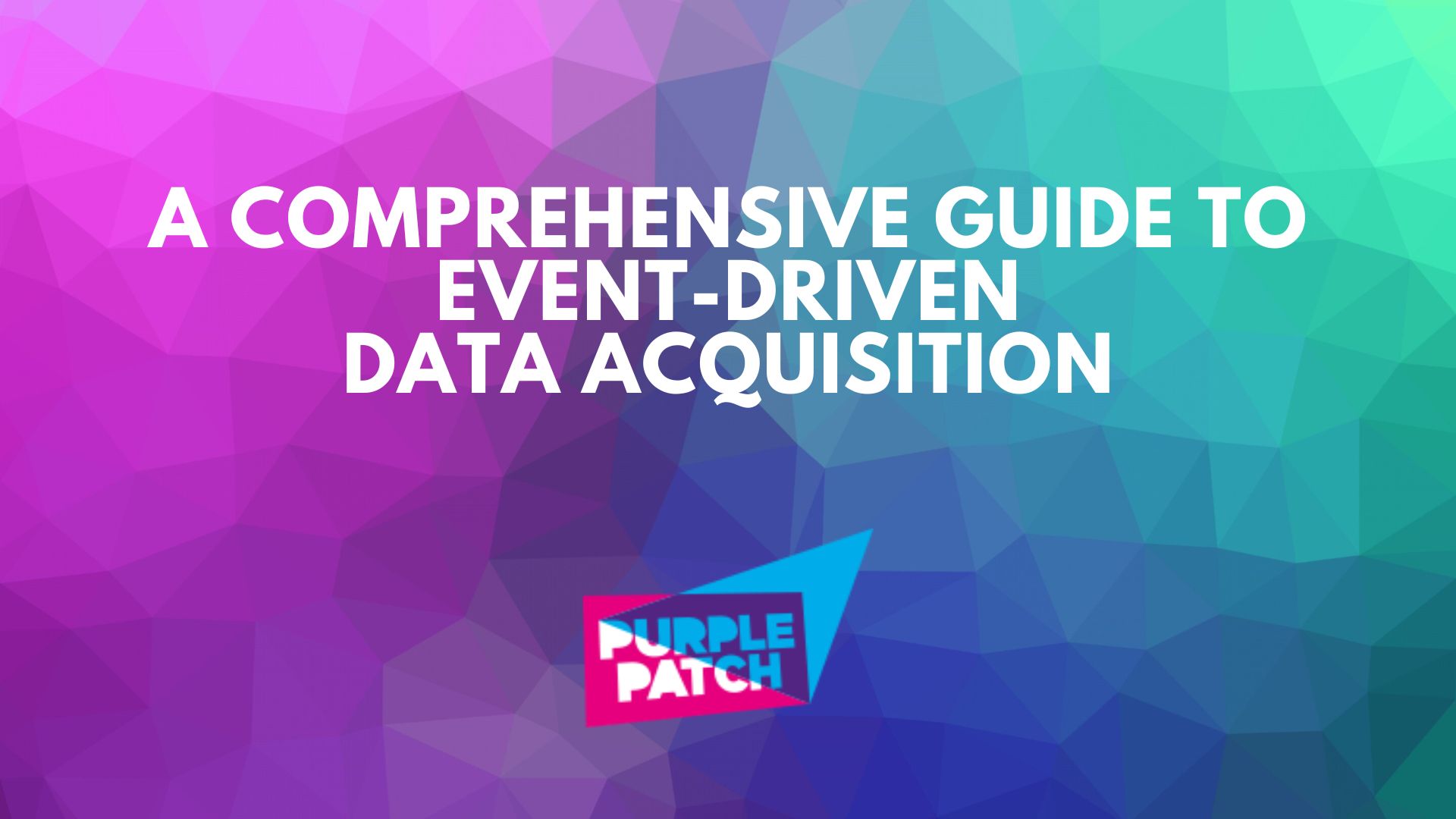In today’s digital age, customer data has become one of the most valuable assets for developing effective marketing strategies. In addition to that, understanding your audience on a deeper level empowers you to deliver personalised experiences, driving brand loyalty and sales.
With that being said, it’s surprising how many brands overlook the opportunities to collect valuable data from their corporate events. As a result, they fail to gather insights from their events that could not only be used for refining marketing strategies, but also cultivating deeper connections with their audience.
If you would like to learn the best strategies for effectively collecting attendee data at your corporate events, you have come to the right page! In this article, we guide you through the best practices for collecting attendee data and provide practical tips to optimise your data collection efforts, from pre-event preparation to post-event analysis. Without further ado, let’s jump right in.
Pre-Event Preparation
Define Objectives and Goals
Identifying Key Metrics: Before the event, establish clear objectives that align with your overall marketing goals. Are you aiming to generate leads, increase brand awareness, or gather market research? Define the specific metrics you’ll use to measure success.
Setting SMART Goals: Ensure your objectives are Specific, Measurable, Achievable, Relevant, and Time-bound (SMART). This framework provides a clear roadmap for what you want to achieve and how you’ll measure progress.
Create Audience Relevance
Target Audience Analysis: Choose events that attract your ideal customer base. Consider factors such as demographics, interests, and industry relevance. This ensures you’re investing your resources where they’ll yield the highest return.
Event Relevance to Your Brand: The event’s theme, purpose, and attendees should align with your brand’s values and offerings. This synergy creates a natural environment for meaningful interactions and data collection.
Creating Compelling Event Content
Engaging Messaging and Branding: Craft messaging that resonates with your target audience. Highlight what sets your brand apart and how it addresses their needs. Consistent, compelling branding helps attendees recognise and remember your presence.
Preparing Promotional Materials: Equip your team with visually appealing and informative materials. From brochures to business cards, having tangible resources on hand facilitates smoother data collection.
Utilising Technology for Data Collection
Incorporating technology into your event strategy streamlines data collection, making the process efficient and seamless.
Mobile Apps and Event Registration
Streamlining Check-In and Data Collection: Implement event-specific mobile apps or registration platforms that allow attendees to check in swiftly. This also provides a convenient avenue for collecting essential contact information.
Personalising Attendee Experiences: Leverage mobile apps to enhance attendee experiences. Provide schedules, interactive maps, and personalised recommendations based on their preferences, all while discreetly gathering valuable data.
QR Codes and NFC Technology
Enhancing Interactions and Engagement: QR codes and Near Field Communication (NFC) technology enable instant connections. Use them strategically to link to landing pages, surveys, or special offers, creating valuable touchpoints for data collection.
Capturing Contact Information Seamlessly: Incorporate QR codes or NFC tags on promotional materials for effortless lead generation. Attendees can simply scan or tap to provide their information, streamlining the data capture process.
Social Media Integration
Leveraging Event Hashtags and Geotags: Encourage attendees to use event-specific hashtags and geotags when sharing their experiences on social media. This not only boosts event visibility but also provides an additional channel for data acquisition.
Encouraging Attendees to Share Data: Through engaging content and incentives, prompt attendees to share their insights or preferences on social platforms. This user-generated data can complement your direct collection efforts.
Interactive Booths and Displays
Engaging Demos and Exhibits: Create interactive displays or product demonstrations that encourage attendees to engage. Capture data as a part of the experience.
Feedback Stations: Set up stations where attendees can provide feedback or answer quick surveys. Offer an incentive for participation.
Live Polls and Surveys
Real-Time Feedback: Conduct live polls or surveys during presentations or sessions to gather immediate feedback and preferences.
Interactive Q&A Sessions: Use technology to allow attendees to submit questions or comments digitally. This not only engages them but also captures valuable insights.
Emerging Trends and Technologies in Event Data Collection
RFID Technology
Smart Badges: Utilise RFID-enabled badges for attendees. These badges can track their movements and interactions, providing valuable insights into their event experience.
Session Tracking: Use RFID technology to monitor which sessions or booths attendees visit. This data helps in understanding their specific interests.
Beacon Technology
Proximity-Based Engagement: Utilise beacon technology to send personalised messages or offers to attendees when they are near your booth or display.
Heatmapping: Analyse the data collected from beacons to understand foot traffic patterns and popular areas within the event space.
Facial Recognition Technology
Personalised Interactions: Implement facial recognition for check-ins and interactions. This technology can provide real-time insights into attendee demographics and emotions.
Behavioural Analysis: Analyse facial expressions and body language to gauge attendees’ reactions to different aspects of the event.
Augmented Reality (AR) and Virtual Reality (VR)
Immersive Experiences: Leverage AR/VR to create interactive and memorable experiences. Capture data within these experiences to gain insights into attendee preferences.
Gesture and Voice Recognition: Utilise these technologies for data capture in a hands-free, intuitive manner.
Artificial Intelligence (AI) Chatbots
Conversational Data Collection: Integrate AI-powered chatbots that engage attendees in conversations, gathering preferences and feedback in a conversational manner.
Natural Language Processing (NLP): Leverage NLP to extract valuable insights from attendee interactions with the chatbot.
Post-Event Analysis and Follow-Up
Survey Feedback Loops
Post-Event Surveys: Send out surveys after the event to gather feedback on the attendees’ experience, preferences, and suggestions for improvement.
Iterative Feedback: Use the feedback to inform future event planning and tailor offerings to better suit attendee needs.
Behavior Tracking
Post-Event Engagement Tracking: Monitor how attendees engage with your follow-up communications. Analyse open rates, click-through rates, and any actions taken.
Conversion Tracking: Track conversions that result from event leads. Measure how many attendees ultimately become customers.
How to Design Effective Data Capture Points
Creating strategic touchpoints for data collection ensures that you gather valuable information while providing value to your attendees.
Strategically Placed Contact Forms
One of the fundamental methods of data collection is through strategically placed contact forms. These forms act as a direct channel for gathering attendee information.
Balancing Accessibility and Privacy: Position contact forms in high-traffic areas to ensure accessibility, while also considering privacy concerns. For example, place them near interactive displays or at registration desks.
Creating User-Friendly Forms: Design forms that are intuitive and easy to fill out. Minimise the number of fields to reduce friction, and consider using features like autofill for efficiency.
Gamification and Incentives
Gamification techniques can significantly enhance engagement and data collection during events.
Encouraging Participation Through Rewards: Integrate elements of gamification, such as quizzes, challenges, or scavenger hunts, that require attendees to provide their information for participation. Offer enticing rewards for completion.
Fostering Meaningful Engagement: Ensure that gamified interactions are relevant to your brand and the event’s purpose. This not only encourages participation but also aligns the data collected with your marketing objectives.
Interactive Activities and Surveys
Engaging attendees through interactive activities and surveys can yield valuable insights and preferences.
Engaging Attendees in Conversations: Create opportunities for meaningful interactions. Whether through live demonstrations, interactive workshops, or engaging presentations, actively involve attendees in the event.
Gaining Valuable Insights: Incorporate surveys or feedback forms as part of these interactive activities. Capture preferences, pain points, and feedback in real-time to inform your marketing strategies.
Interactive Booths and Displays
One of the most effective ways to engage attendees and gather data is through interactive booths and displays. These dynamic setups not only draw attention but also encourage active participation.
Engaging Demos and Exhibits: Showcase your products or services through captivating demonstrations. This not only educates attendees about your offerings but also provides an opportunity to collect data. Incorporate registration or sign-up forms within the demo experience.
Feedback Stations: Set up dedicated stations where attendees can provide instant feedback or participate in quick surveys. Offering a small incentive, such as a discount or exclusive content, can incentivise participation.
Ensuring Compliance and Privacy
Respecting attendee privacy and complying with data protection regulations is paramount. Establishing trust in how their data will be used builds a positive relationship with your audience.
GDPR and Other Data Protection Regulations
Before collecting any data, it’s crucial to understand and adhere to relevant data protection regulations, such as the General Data Protection Regulation (GDPR).
Obtaining Consent for Data Collection: Ensure that you have clear and explicit consent from attendees before collecting any of their data. Provide them with transparent information about how their data will be used.
Secure Storage and Handling Practices: Implement robust security measures to protect the data you collect. This includes encryption, access controls, and regular security audits to prevent unauthorised access or breaches.
Transparent Communication with Attendees
Maintaining open and transparent communication about data usage is key to building trust with your attendees.
Privacy Policy Communication: Communicate your privacy policy to attendees, either through event materials or digital channels. Make sure they understand how their data will be used, who will have access to it, and how long it will be retained.
Offering Opt-Out Options: Provide attendees with clear and easy-to-use options for opting out of data collection or unsubscribing from future communications. Respecting their preferences demonstrates your commitment to their privacy.
Opt-In Stations
Creating clear and accessible opt-in points allows attendees to willingly share their data, reinforcing their trust in your brand.
Clear Opt-In Points: Set up marked stations where attendees can choose to opt in to receive further communications or share their data. Ensure that the benefits of doing so are prominently displayed.
Transparent Messaging: Communicate the purpose and benefits of providing their data. Explain how it will be used, emphasising the value they will receive in return, such as personalised recommendations, exclusive offers, or tailored content.
Privacy Booths or Stations
Dedicated privacy spaces provide a platform for open communication about data handling practices.
Dedicated Privacy Spaces: Designate specific areas within the event where attendees can learn about how their data will be used and ask any questions or express concerns they may have.
Privacy Ambassadors: Assign trained staff members to act as privacy ambassadors. They can guide attendees through the privacy options available, provide information on data handling practices, and address any concerns attendees may have regarding their data.
Final Thoughts
Effectively harnessing attendee data can be a game-changer for your marketing efforts, but it must be done with care, respect for privacy, and adherence to regulations. In addition to this, keep in mind that it’s not solely about the data you collect, but also the event design and experiences you create for your attendees. By providing value and fostering meaningful interactions, you lay the foundation for long-lasting customer relationships. In conclusion, effective event marketing hinges on a seamless blend of strategy, technology, and attendee engagement.
If you’re ready to turn your corporate event into a standout experience while also gathering valuable marketing data, our team of seasoned corporate event planners is here to help. Contact us today to explore the possibilities!



